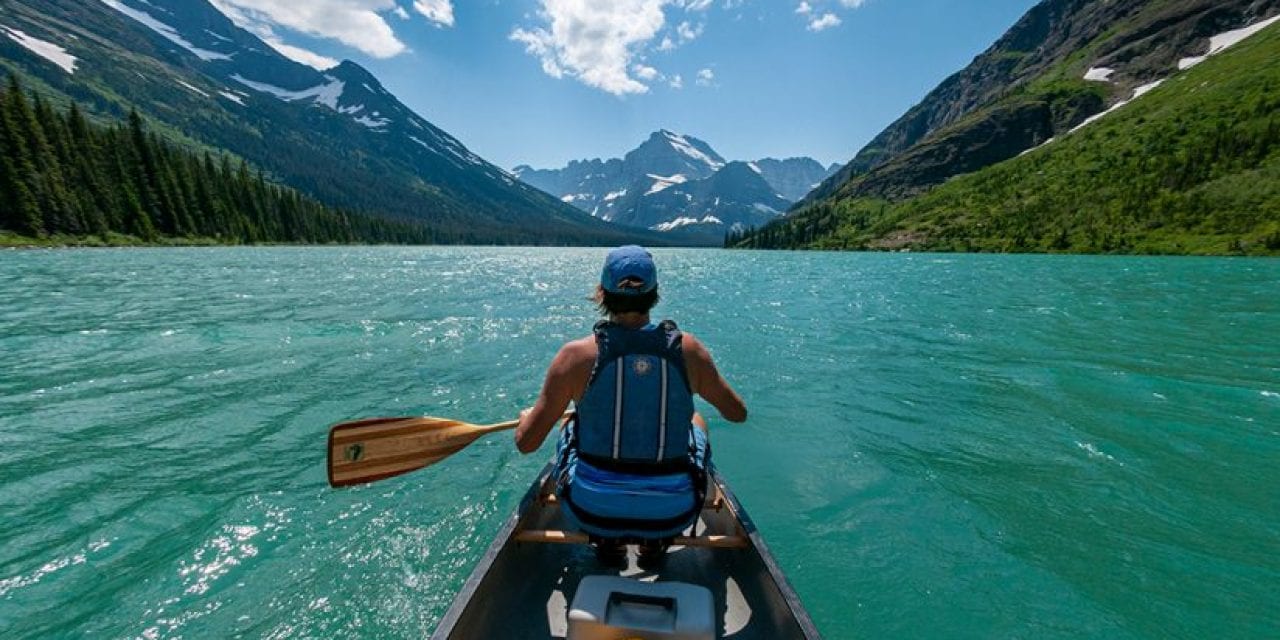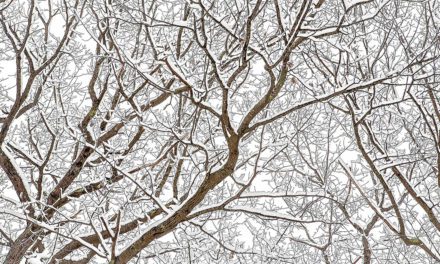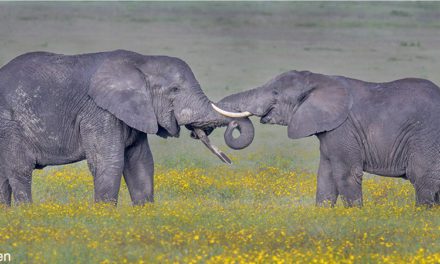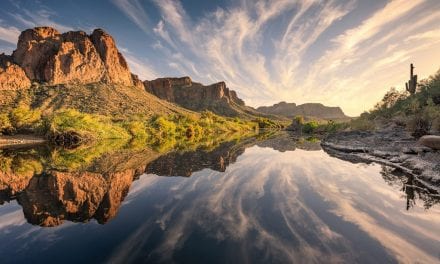My career has revolved around adventure sports photography for 30 years. I’ve photographed everything from sea kayaking in the Florida Keys to mountaineering on Denali. I’ve learned some helpful photography techniques while guiding and photographing these adventure sports and gotten a lot of bumps and bruises along the way.
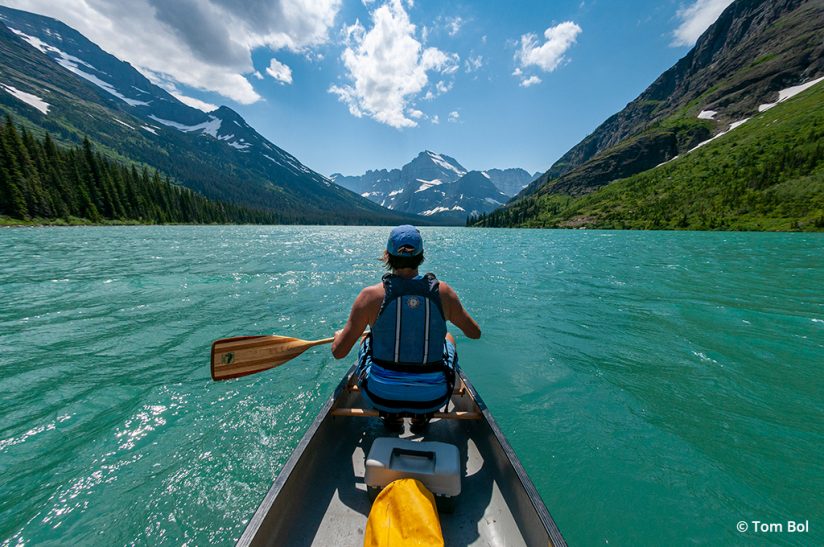
Canoeing in Glacier National Park on Lake Josephine. Nikon D300S, AF DX Fisheye-Nikkor 10.5mm f/2.8G ED. Exposure: 1/800 sec., ƒ/11, ISO 200.
America has some of the most diverse landscapes, vast wilderness areas and magnificent national parks on the planet. The range of environments is remarkable. Red rock deserts, high alpine peaks, subtropical islands and millions of acres of wilderness are waiting to be explored. You don’t have to cross an ocean to get there—these gems are only a road trip away. Here are some of the most popular and accessible adventure sports and photography tips for each. I’ve also included some of my favorite destinations for these sports. Many of these adventures are likely right in your backyard or not too far away. All you have to do is load up your car and head out. Let the road trip begin!
Hike To Camp
Go camping and hiking this summer. The simplest way to get into the backcountry and find plenty of adventure is backpacking. While you will need to be able to deal with the elements, cook outdoors, read a map and know some basic first aid to be safe and comfortable, a trip to a nearby campground will transport you from the constant chatter of city life to the serene bird calls of the wilderness.
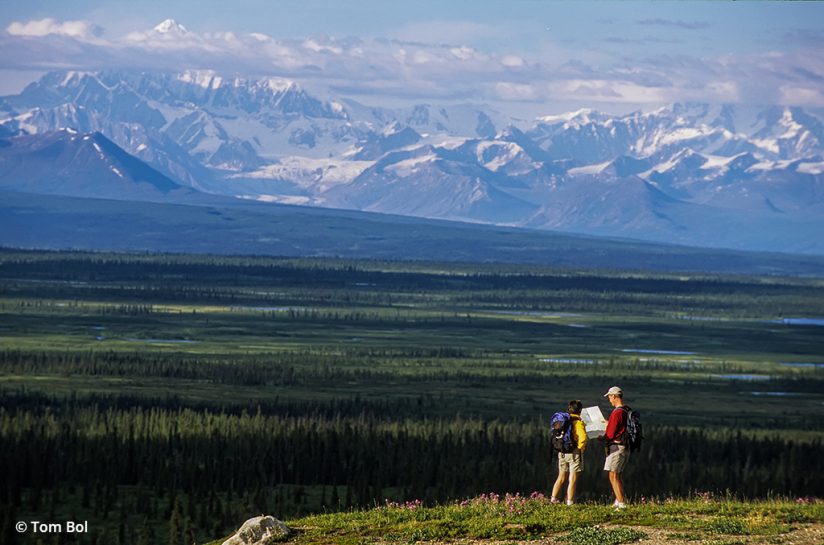
Hikers looking at a map while taking in the view of the Alaska Range in the distance. Nikon F5, AF-S NIKKOR 70-200mm f/2.8E FL ED VR, Fujichrome Provia 100F. Exposure: 1/250 sec., ƒ/8.
Less is more when it comes to backpacking since you are carrying everything on your back. Be selective in what you are bringing on your trip. I worked as a NOLS (National Outdoor Leadership School) instructor for years, and its standard trip was a 30-day expedition into remote wilderness areas. Day one of every course was going through students’ gear piece by piece and eliminating superfluous items. Resist the temptation to bring lots of extra food, and carefully plan out your meals for each day of your trip. Of course, if your campground is near parking for your vehicle, you can be less restrictive on what you bring.
Camera gear quickly adds weight. But with today’s mirrorless camera options, equipment is much lighter. My lightweight kit includes a Nikon Z 6, NIKKOR Z 24-70mm f/4 S and an AF-S NIKKOR 70-200mm f/4G ED VR (used with the Nikon FTZ adapter). This system is under 5 pounds. If I can handle another pound, I will add the NIKKOR Z 14-30mm f/4 S. I also often bring my lightweight Really Right Stuff tripod, Singh-Ray polarizer and 10-stop ND filter for landscape photography. Battery usage is critical—I limit LCD image review. For short trips, I bring extra batteries. On longer trips, I carry my Goal Zero Sherpa 100AC solar charging system. The Sherpa has standard 100-watt AC power so I can charge camera batteries, and a lightweight solar panel recharges the power pack in the field.
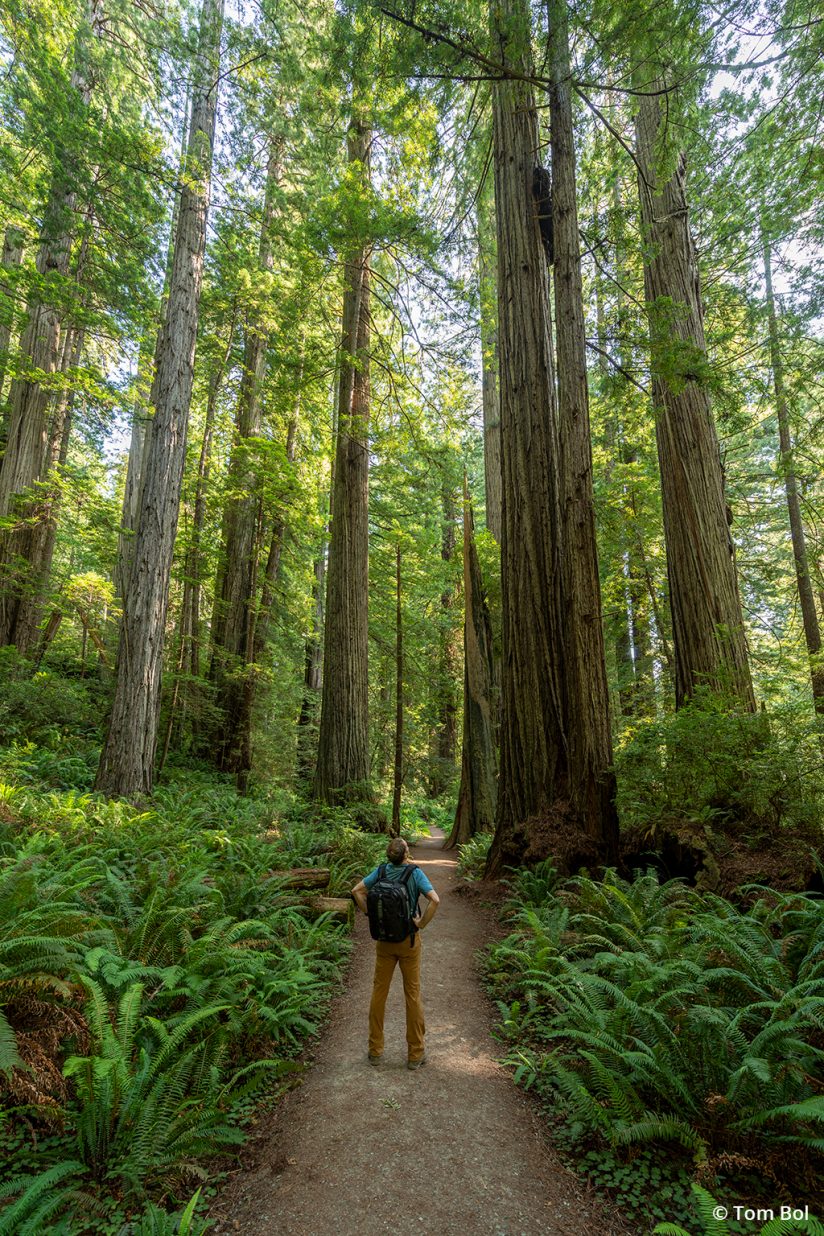
Hiking in Redwood National Park in northern California. Nikon D850, AF-S NIKKOR 14-24mm F2.8G ED. Exposure: 1/20 sec., ƒ/5.6, ISO 200.
Camping and hiking offer access to stunning remote landscape photography. But there are some unique adventure images to be made as well. One of my favorite shots is photographing my tent at twilight in a beautiful location. Adding the human element to a landscape may resonate with the viewer; they want to be that person in the tent. If you have a wide-angle lens, try photographing through the tent door. As the sun sets, consider illuminating your tent with a headlamp or flash to produce a warm, friendly glow.
Hiking trails can create graphic lines through your photograph and draw the viewer into the picture. I also like to photograph hikers from ground level. Getting up close to gritty hiking boots offers a fresh perspective.
The beauty of hiking and camping is how accessible it is to everyone. Local, state and national parks are great hiking areas, as are national forests and wilderness areas. Some of my favorite hiking areas are Acadia National Park in Maine, the Wind River Mountains in Wyoming, Redwood National Park in California and the magical slot canyons of southern Utah.
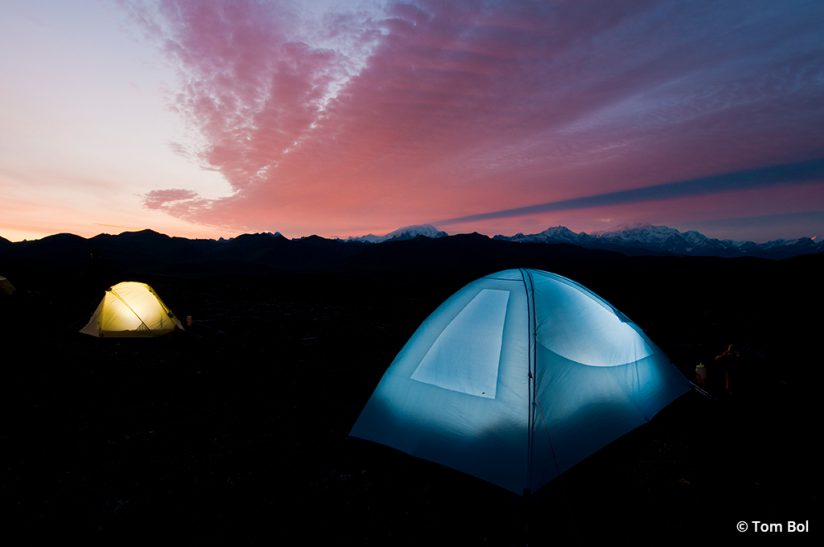
Camping in Alaska at sunset. Tents illuminated by firing speedlights triggered by wireless transmitters. Nikon D300S, AF-S DX Zoom-Nikkor 12-24mm f/4G IF-ED. Exposure: 1/40 sec., ƒ/9, ISO 200.
Grab A Paddle
Canoeing, kayaking and rafting offer one great advantage over backpacking; you don’t have to carry your gear on your back. On the other hand, photography can be more precarious since you are photographing near the water.
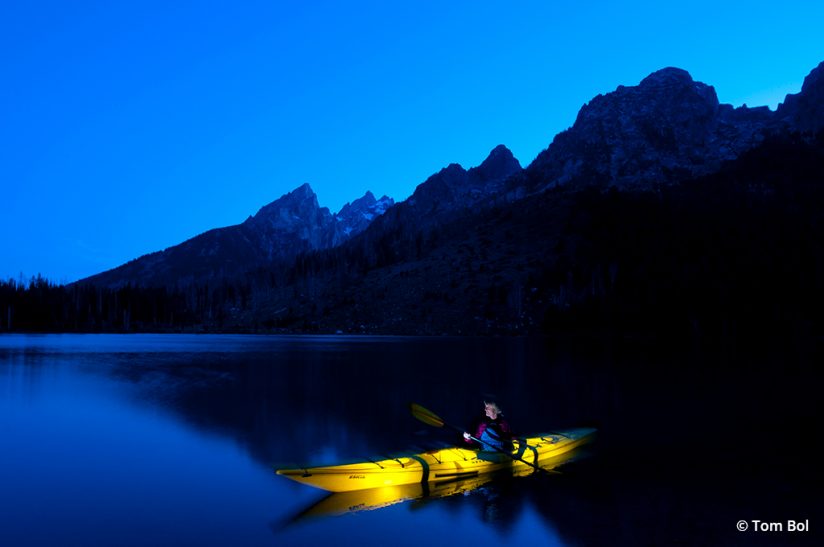
Sea kayaking on String Lake in Grand Teton National Park. The kayak was illuminated by three speedlights placed inside the boat and triggered with wireless transmitters. Nikon D300S, AF-S DX Zoom-Nikkor 12-24mm f/4G IF-ED. Exposure: 1/13 sec., ƒ/13, ISO 200.
Paddling can take many forms, from flat water lake canoeing to adrenaline-pumping whitewater kayaking. Make sure you know the risks and paddle with experienced boaters. Always use PFDs (personal floatation devices), and consider the water temperature and how close you are to shore.
Canoeing on a small lake is an easy way to try out paddling. Be comfortable canoeing before bringing your camera with you. Sea kayaking is another great option. Sea kayaks can be very stable and open up ocean paddling trips. I also really enjoy sea kayaking on large lakes. I once had an assignment photographing a sea kayaking trip around Isle Royale on Lake Superior. The “lake” looked more like an ocean, but despite large waves, we were able to paddle most days.
Whitewater paddling is for experienced boaters only. Part of whitewater kayaking is rolling if you flip, so this sport is not for everybody. But capturing teeth-gritting whitewater images is possible from shore.
One consideration for all paddling photography is keeping your gear dry. I use a range of waterproof cases to pack my camera gear. I tie them off in my canoe or on the top deck of my sea kayak. They are totally waterproof, so I can grab my camera for a shot while paddling and then quickly seal up my camera against the elements. Dry bags are another option. These bags are flexible and have a foldable closure to keep things dry. Their advantage is they are easier to pack, but it also takes longer to get your camera in and out of a dry bag.
Paddling offers exciting image-making possibilities. You have two approaches: from the shore or in a boat. Some sports, like whitewater kayaking, photograph great from the river’s edge. We have a wild and scenic river that flows near our house, and kayakers paddle by all summer. I photograph from a few key spots that are only 10 feet from big rapids. This low perspective at water level is fantastic for close-up action.
I like to use a shutter speed of 1/1000 sec. and faster to freeze the flying water droplets. Set your camera to a fast frame rate so you get as many images as possible. Paddle position changes frequently, and you want to capture an image without the paddle blocking the kayaker’s face.
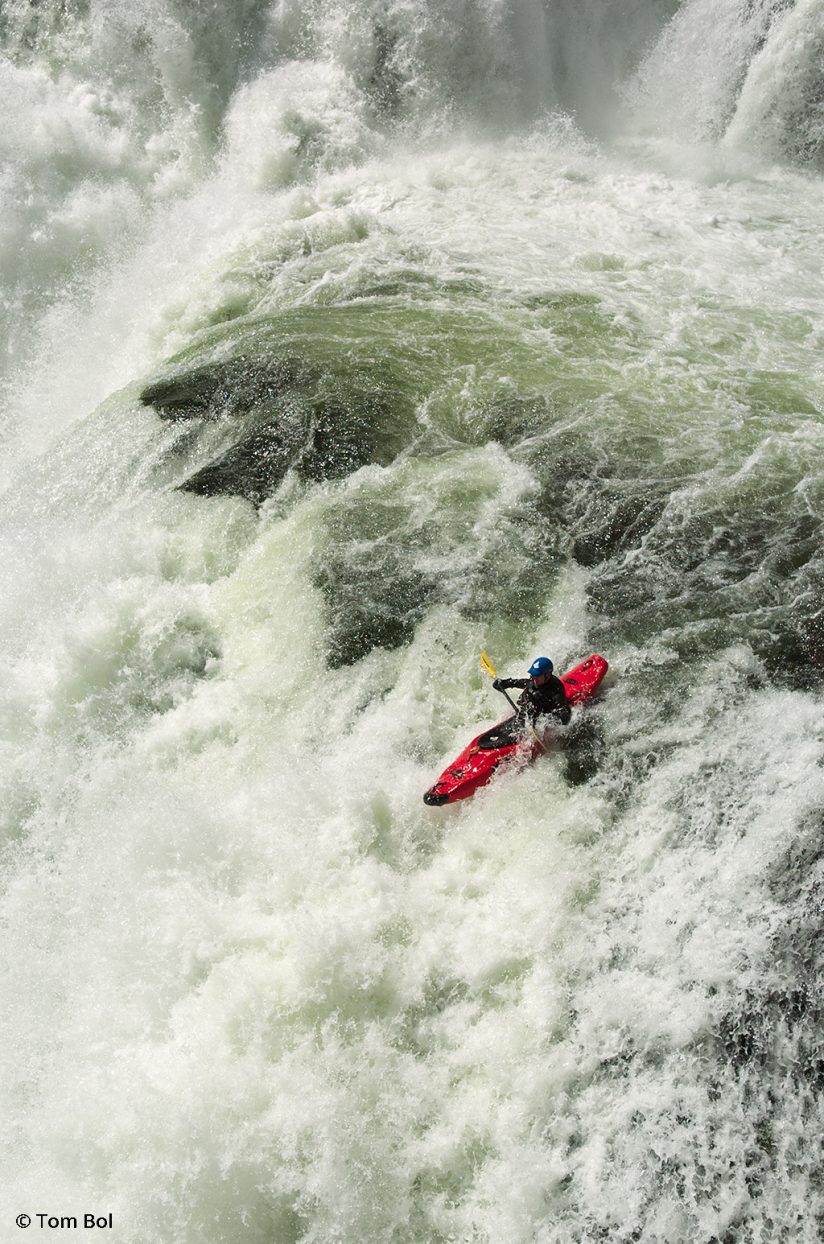
A kayaker paddles off Lower Mesa Falls on the Henrys Fork of the Snake River in Idaho. Nikon D2H, AF-S NIKKOR 24-70mm F2.8G ED. Exposure: 1/800 sec., ƒ/8, ISO 200.
If you are photographing canoeing and sea kayaking, consider photographing from the boat. I love creating POV (point of view) images while paddling. I use a fisheye lens and attach my camera to a helmet or high on the front of my PFD (try twisting your camera strap to shorten it so it rests high on your chest). Use a cable release or self-timer to trigger the shutter.
I once attached a Nikon DSLR to a helmet and kayaked through a rapid to create a POV whitewater kayaking image. The photo looked fantastic, but it was a little nerve racking knowing if I flipped I would trash thousands of dollars of camera gear. These days, a waterproof action cam like a GoPro would be a good choice—and your neck won’t be as sore after paddling with a full-sized DSLR on your head.
There are incredible paddling locations all across the U.S. Rivers like the Nantahala in North Carolina, the Niobrara in Nebraska, or the Colorado River in Arizona are well known and offer a range of whitewater options. If you want to try out some subtropical island hopping, consider doing some sea kayaking in the Florida Keys. If you are more interested in canoeing, drive north and explore the countless lakes in Maine or the Boundary Waters in Minnesota. Canoe rentals are available at popular destinations. If you want one destination that is great for all paddling options, consider the ultimate road trip to Alaska!
Climb A Rock
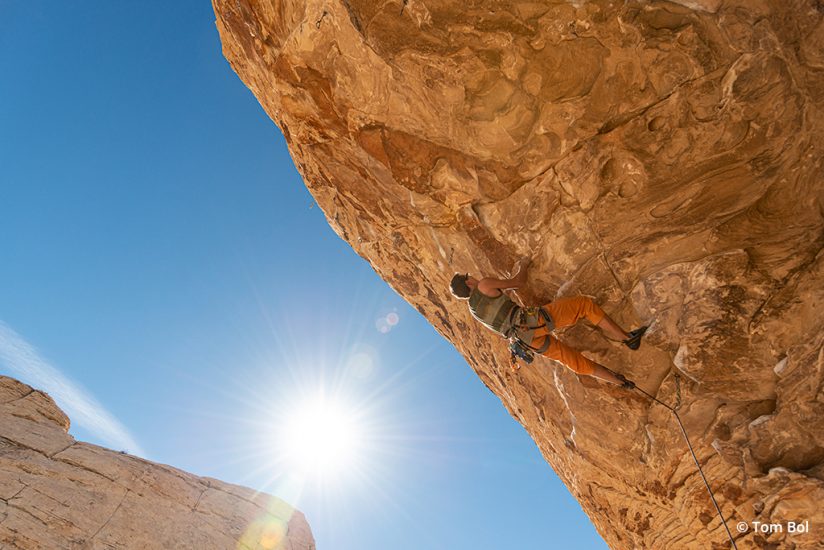
A rock climber climbing a steep roof in Red Rock, Nevada. Nikon D800, AF-S NIKKOR 24-70mm F2.8G ED. Exposure: 1/1250 sec., ƒ/5.6, ISO 200.
Rock climbing has become very popular and offers some of the most dramatic adventure sports photography you can imagine. Similar to whitewater kayaking, you don’t have to be on a cliff face to photograph rock climbing, but finding a good location to photograph a climber is very important.
Sometimes you can photograph from a safe perch at the same level or above the climber, which gives you the classic top-down perspective. Your other option is ascending a rope to get above the climber. This requires a solid climbing background. Hanging a few feet above a climber while they attempt a difficult move is a bucket list experience for many adventure sports photographers. I’m always struck at the emotional contrast of the moment. I’m safely attached to a rope with minimal danger and stress. Five feet away, the climber is making a hard move with big fall potential—their stress, focus and tension are palpable.
Most climbing photographers avoid shooting directly below a climber; try moving away from the cliff so you get more scale and a different perspective. Figures in a landscape create dramatic adventure sports images. The scale produces a sense of awe and wonder at the enormity of the situation.
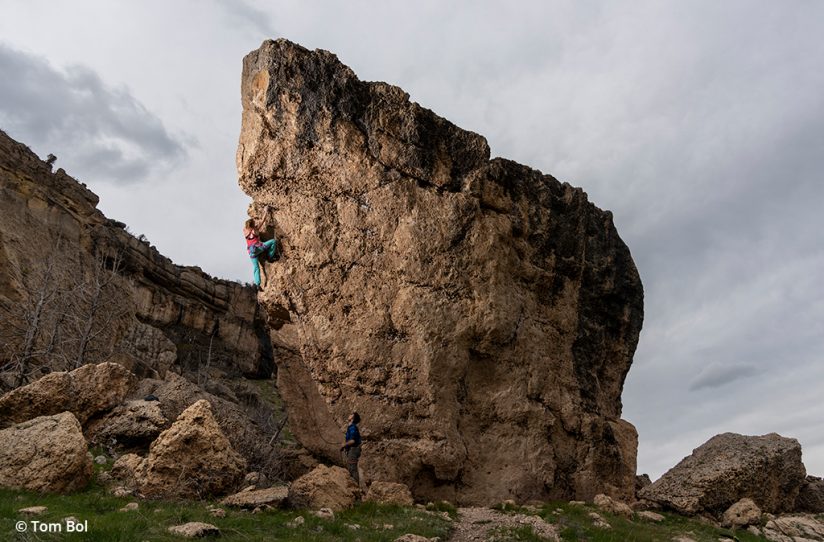
Rock climbing in Sinks Canyon, Wyoming. Nikon D810, AF-S NIKKOR 24-70mm F2.8G ED. Exposure: 1/250 sec., ƒ/5.6, ISO 100.
Try photographing right up the rope leading to the climber from the belayer, as this creates a nice visual handrail for the eye to travel through the image. Cliff faces and spires provide diverse lighting options. Find a sunlit climber on a ridge against a shadowed background—the contrast will make the image pop. Or try the opposite scenario, photographing a climber in shade against a sunlit face for dramatic silhouettes. Take it a step further and use strobe to light the climber for more creative options.
Great rock climbing locations are scattered throughout the U.S. Stunning locations in the east include Red River Gorge in Kentucky, the Gunks in New York, and Cathedral Ledge in New Hampshire. Out west, famous locations like Yosemite in California, Red Rocks in Nevada, and Eldorado Canyon in Colorado beckon adventure sports photographers. I live in northern Colorado and really enjoy climbing and photographing at less-crowded limestone crags in neighboring Wyoming.
Ride The Trails
Mountain biking is an adventure sports activity that almost anyone can photograph. Virtually every state has mountain biking locations, and connecting with good riders is as simple as checking in at the local bike shop. I had an assignment to photograph mountain biking on the Slickrock Trail in Moab, Utah, and needed some really good mountain bikers. Ten minutes after walking into a bike shop, I had three mountain bike guides excited and ready to ride for some images.
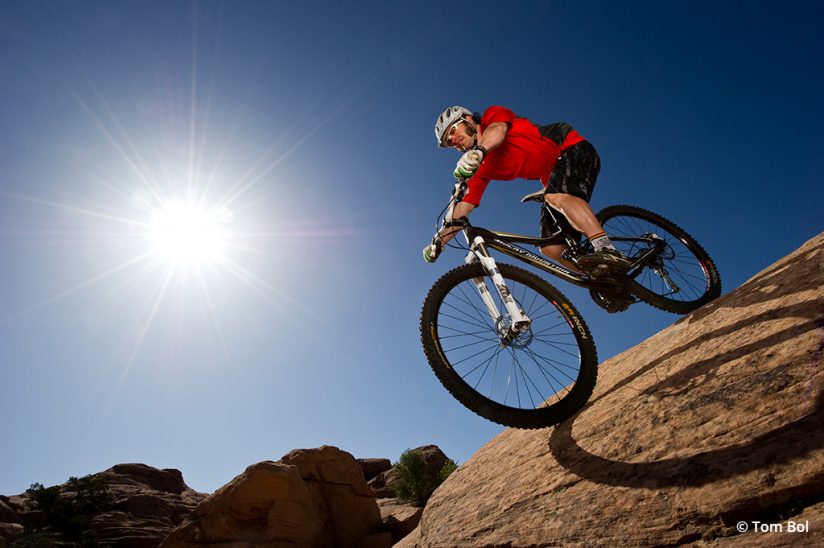
Mountain biking on the Slickrock Trail in Moab, Utah. Nikon D3S, AF-S NIKKOR 14-24mm F2.8G ED. Exposure: 1/250 sec., ƒ/20, ISO 200.
I learned early on that while most everyone can ride a bike, more extreme mountain biking is best left to advanced riders. During my assignment in Moab, I went over the handlebars twice—not good for the camera gear and your health.
Of all the sports I’ve mentioned, mountain biking is the fastest. Speeding riders offer great pan-and-blur photography opportunities. I like to start with my shutter speed around 1/30 sec. for these shots. The goal is to have some sharp focus on the riders and a blurry background. Remember, backgrounds are as important as subjects with pan-and-blur. Find a nice clean background with strong color to create striking images.
Capturing riders in midair going off jumps is also a great image. The biker doesn’t have to be 10 feet in the air. Try shooting from ground level using a fisheye lens to exaggerate the perspective and scale. For creative POV images, I like to attach a Manfrotto Magic Arm to my bike frame to hold my camera. I can then photograph interesting perspectives, including part of my own bike in the final image.
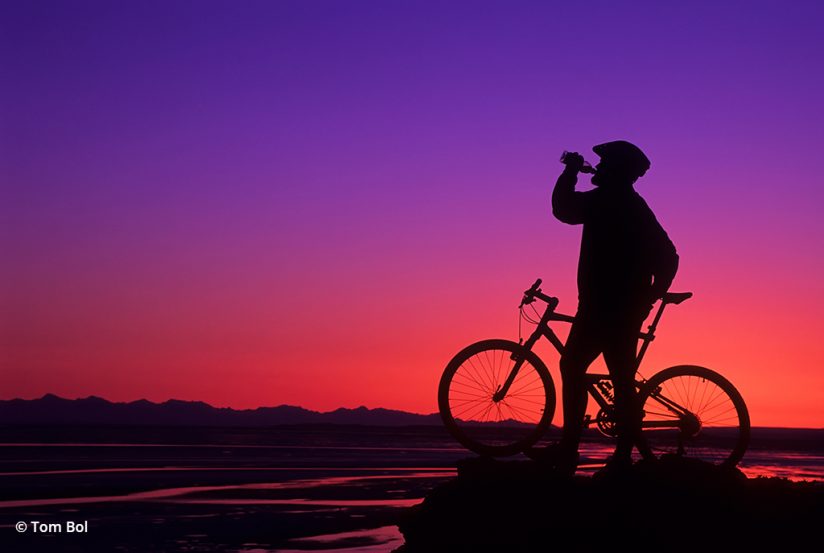
A mountain biker takes a break at sunset along Turnagain Arm, Alaska. Nikon F5, AF-S 70-200mm f/2.8E FL ED VR, Fujichrome Velvia 50. Exposure: 1/30 sec., ƒ/8.
Check in with your local bike shop to see where the best trails are in your area. Or load up the bikes and drive to one of America’s mountain biking meccas like Moab, Utah; Crested Butte, Colorado; or Marin County, California, to name a few.
Get out your atlas, start planning your summer road trip, and include some adventure sports photography on your itinerary. I can’t wait to put on my climbing harness or dip my paddle into the water. Time to hit the road.
See more of Tom Bol’s work at tombolphoto.com.
The post Adventure Sports Photography Nearby appeared first on Outdoor Photographer.

